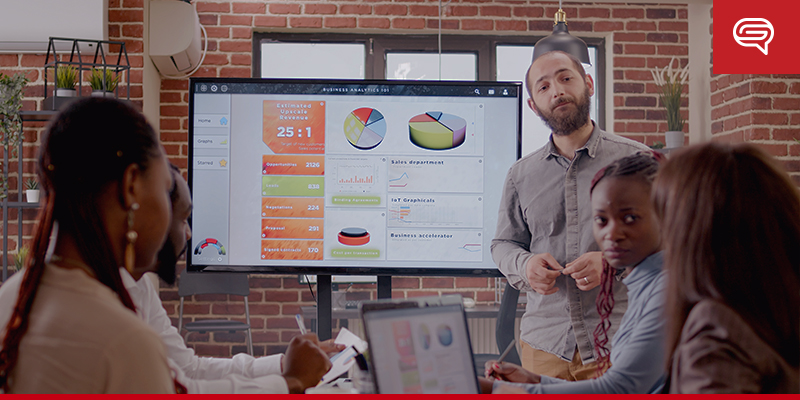
Overconfidence bias is a common cognitive bias where individuals overestimate their abilities, resulting in potentially flawed presentations. It can lead to assumptions about the audience’s perspective, exaggerated claims without proper evidence, and a lack of self-awareness during presentations.
Thus, it is crucial to recognize and combat overconfidence bias to ensure our presentations are clear, accurate, and persuasive.
Need a Presentation Designed?
Click Here To View Our Amazing Portfolio
Let’s explore the different signs of overconfidence bias during presentations and discuss practical strategies to mitigate it to deliver truly effective presentations.
Signs of overconfidence bias in presentations
Recognizing the signs of overconfidence bias during presentations is crucial to combat and mitigate its effects effectively. Here are some common signs that may indicate overconfidence bias in presentations:
Overreliance on personal opinions and assumptions
Overly relying on own opinions and assumptions without providing solid evidence or data to support claims indicates overconfidence bias. This can lead to presenting subjective perspectives as objective facts, which can undermine the credibility of the presentation.
Lack of self-awareness
Overconfident presenters may exhibit a lack of self-awareness during a presentation, failing to recognize their limitations or biases. They may come across as overly confident or dismissive of differing viewpoints, resulting in a one-sided or biased presentation.

Overgeneralizing and exaggeration
Overconfident presenters tend to overgeneralize or exaggerate their statements. They may claim their solution is the best or only solution even without showing proper evidence or data to support their claims, resulting in sweeping statements or unrealistic claims that lack substance, leading to a loss of credibility.
Disregard for the audience’s perspective
Without considering the diverse backgrounds, opinions, and needs of the audience, overconfident presenters may assume that their audience shares their perspective. This can result in a presentation that fails to resonate with the audience or address their specific concerns, leading to misinterpretations or misunderstandings.
Reluctance to seek feedback
Overconfidence bias leads presenters to believe their presentation is flawless and not open to improvement. This can result in a reluctance to seek feedback from others, dismissing constructive criticism or feedback as unnecessary. Overconfidence can hinder the opportunity for continuous improvement and growth as a presenter.
Strategies for combating overconfidence bias in presentations
Combatting overconfidence bias in presentations requires self-awareness, reflection, and intentional efforts to mitigate its effects. Here are some practical strategies that presenters can employ to combat overconfidence bias and deliver effective presentations:
Research and gather evidence
Presenters should conduct thorough research and gather solid evidence to support their claims and statements. They should use reputable sources, data, statistics, and examples to back up their arguments and claims. Relying on facts and evidence can avoid overgeneralizations and exaggerations from overconfidence bias.
Practice humility and self-reflection
Presenters should cultivate humility and self-reflection, recognizing that they may have biases or limitations in their perspectives. Acknowledgment that not all opinions or assumptions are equal and being open to feedback and different viewpoints lead to a more balanced and credible presentation.
Consider diverse perspectives
Striving to consider diverse perspectives is one of the first things presenters should do. They should recognize and address potential biases, assumptions, or knowledge gaps in their perspective and adapt the presentation to resonate with the audience’s backgrounds, opinions, and needs. This can help avoid presenting a one-sided or biased view and ensure a more inclusive and effective presentation.

Seek feedback and input
Presenters should actively seek feedback and input from others before and after the presentation. They should solicit feedback from colleagues, mentors, or trusted individuals to get suggestions on the presentation’s content, delivery, and overall effectiveness. Being open to feedback and constructive criticism can help identify potential overconfidence biases and areas for improvement.
Practice active listening
Presenters should practice active listening during their presentations, paying attention to the questions, challenges, and feedback from the audience. This includes avoiding defensive responses or dismissive attitudes, and genuinely engaging with the audience’s input. Active listening can help presenters gain valuable insights, address potential biases, and foster meaningful discussions that enhance the overall effectiveness of the presentation.
Prepare for questions and challenges
Anticipating potential questions or challenges from the audience and being prepared to respond respectfully make a presenter more adaptable and flexible. By practicing humility and self-reflection through appropriately preparing, presenters can understand the needs and expectations of their audience.
Need a Presentation Designed?
Click Here To View Our Amazing Portfolio
Overconfidence significantly impacts a presentation’s effectiveness. It leads to overgeneralizations, inaccuracies, disengagement, and a negative perception of the presenter. Being mindful of one’s biases and continuously striving for improvement can lead to successful and credible presentations that resonate with the audience and achieve the desired outcomes.





